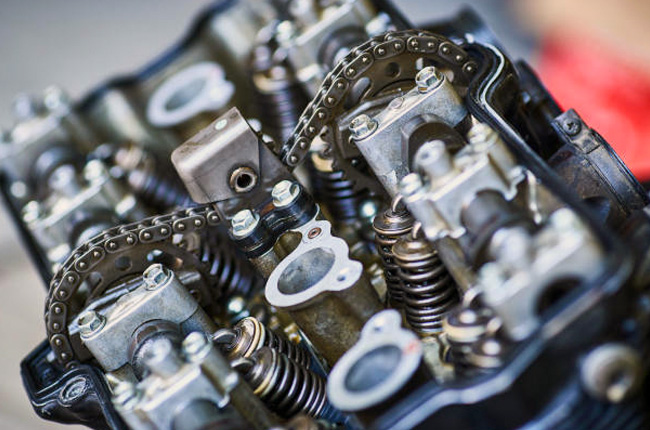How to tell if your motorcycle engine is seized
Is your engine on its way out? Beware of a seizure.

Your engine is one of the most, if not the most, complex and important parts of your bike. It’s what runs everything. From the bike itself to all the electronics. Without it, a motorcycle would just be called a cycle—sans the motor.
While a manufacturer ensures that a bike’s engine will live up to the task and keep on running for years to come, it’s not all that impossible for an engine to incur some serious neglect and damage after a lot of abuse.
What is seizing?
An engine seizing can mean many things. Simply put, however, your engine is stuck and refuses to start, run, or even get cranked by the starter.
What causes engine seizures?

Broken internal components - In very rare cases, your engine can possibly seize if an integral part like a piston, connecting rod, or crankshaft gets bent or broken to the point that it blocks the rest of the parts from moving.
Lack of lubrication - Having no oil in your motor will cause it to produce excess friction, which causes it to produce way more heat. Given how fast components move inside a motor, chances are the excess heat will cause the components to fuse together if the heat is too great for the metals to resist. Failure to maintain proper oil levels will lead to a lack of lubrication.
How to tell if an engine will seize

Tell-tale signs include a strong burning smell and overheating. Because your engine has little to no lubrication, it is producing way more heat than the bike’s cooling system can handle. Be on the lookout for a strong metallic smell.
Knocking is another major warning sign that you must look out for. If you hear some light tapping noises or a faint knock while the engine is running or idling, there is a chance that it might seize upon you if you continue to use it. The sound is like a metallic pinging or snagging inside the engine. Knocking is also rhythmic and follows the speed of the engine.
How to fix a seized engine
Chances are if your engine is seized, it’s a goner. Your best bet would be to fit a new motor to the frame. There are specialists that will be able to repair as much of the engine as they can, but typically an engine seizure is a very serious type of failure that requires drastic measures to fix.
How to prevent engine seizures

It goes without saying, but take care of your motor and keep it running well. The main cause of engine seizures is the lack of lubrication. Change your oil regularly and inspect your bike’s oil level constantly. Make sure that the oil level in your sight glass is in the middle of the two lines.
Typically, high-performance motorcycles are more vulnerable to engine seizures due to the excess heat that their engines produce. Sport nakeds and sportbikes are among some of the more common genres of motorcycle that experience engine seizures, however even the classics have their moments due to neglect.
Other components that you need to take care of are your oil pan, oil filter, oil drain plug/s, oil cooler, and oil pump. Make sure that all these components aren’t leaking and are in good working condition.
Related Articles
-
Is your motorcycle out of warranty? Be sure to check these items ASAP / Featured Article
If your motorcycle is out of warranty, it’s now your duty to make sure you stay on top of its maintenance no matter what, or run the risk of facing a hefty repair bill.
-
Think twice before installing these 3 motorcycle modifications / Featured Article
When it comes to upgrading your motorcycle, you may want to think twice before installing these 3 mods.
-
Is it normal for my motorcycle to backfire? / Featured Article
If you’ve ever wondered why your motorcycle makes pops, bangs, and crackles upon deceleration, here are a few reasons why.
-
Here are 5 easily overlooked maintenance jobs that can leave you stranded / Tips & Advice
Getting stranded is a huge pain in the butt. Be sure to keep these 5 things in check so as to have a worry-free ride.
-
5 telltale signs that your brake fluid needs replacement / Featured Article
Husqvarna has debuted its 2024 model range in the global market, consisting of updates to the TE and FE enduro models.
Latest Features
-
Big bike versus small bike: which one is better for your lifestyle? / Featured Article
Here are a few tips to decide if you should get a big bike or small bike depending on your lifestyle.
-
Axial versus radial calipers - brake technology explained / Featured Article
Today, let’s talk about the differences between radially and axially mounted calipers, and determine the situations which are ideal for either.
-
3 things that make the Honda ADV 160 the perfect small-displacement all-rounder / Featured Article
Here are three reasons why the new Honda ADV 160 is one of the best small-displacement scooters in the market today.









